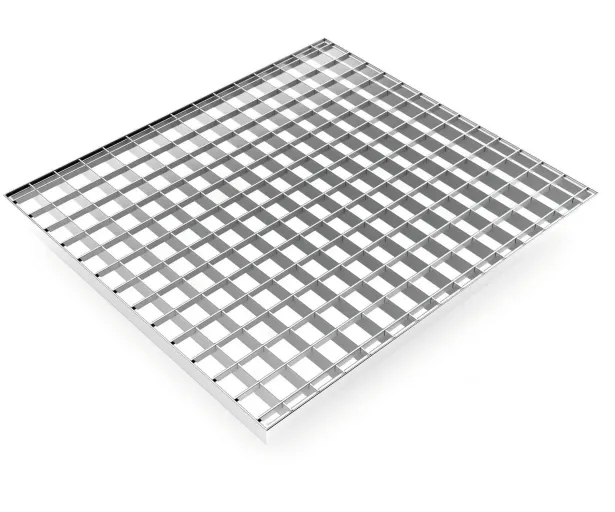- Industrial zone, South of Anping Town, Hengshui, Hebei, China.
- sales@hfpetromesh.com
- +86-18931809706
 Afrikaans
Afrikaans  Albanian
Albanian  Amharic
Amharic  Arabic
Arabic  Armenian
Armenian  Azerbaijani
Azerbaijani  Basque
Basque  Belarusian
Belarusian  Bengali
Bengali  Bosnian
Bosnian  Bulgarian
Bulgarian  Catalan
Catalan  Cebuano
Cebuano  Corsican
Corsican  Croatian
Croatian  Czech
Czech  Danish
Danish  Dutch
Dutch  English
English  Esperanto
Esperanto  Estonian
Estonian  Finnish
Finnish  French
French  Frisian
Frisian  Galician
Galician  Georgian
Georgian  German
German  Greek
Greek  Gujarati
Gujarati  Haitian Creole
Haitian Creole  hausa
hausa  hawaiian
hawaiian  Hebrew
Hebrew  Hindi
Hindi  Miao
Miao  Hungarian
Hungarian  Icelandic
Icelandic  igbo
igbo  Indonesian
Indonesian  irish
irish  Italian
Italian  Japanese
Japanese  Javanese
Javanese  Kannada
Kannada  kazakh
kazakh  Khmer
Khmer  Rwandese
Rwandese  Korean
Korean  Kurdish
Kurdish  Kyrgyz
Kyrgyz  Lao
Lao  Latin
Latin  Latvian
Latvian  Lithuanian
Lithuanian  Luxembourgish
Luxembourgish  Macedonian
Macedonian  Malgashi
Malgashi  Malay
Malay  Malayalam
Malayalam  Maltese
Maltese  Maori
Maori  Marathi
Marathi  Mongolian
Mongolian  Myanmar
Myanmar  Nepali
Nepali  Norwegian
Norwegian  Norwegian
Norwegian  Occitan
Occitan  Pashto
Pashto  Persian
Persian  Polish
Polish  Portuguese
Portuguese  Punjabi
Punjabi  Romanian
Romanian  Russian
Russian  Samoan
Samoan  Scottish Gaelic
Scottish Gaelic  Serbian
Serbian  Sesotho
Sesotho  Shona
Shona  Sindhi
Sindhi  Sinhala
Sinhala  Slovak
Slovak  Slovenian
Slovenian  Somali
Somali  Spanish
Spanish  Sundanese
Sundanese  Swahili
Swahili  Swedish
Swedish  Tagalog
Tagalog  Tajik
Tajik  Tamil
Tamil  Tatar
Tatar  Telugu
Telugu  Thai
Thai  Turkish
Turkish  Turkmen
Turkmen  Ukrainian
Ukrainian  Urdu
Urdu  Uighur
Uighur  Uzbek
Uzbek  Vietnamese
Vietnamese  Welsh
Welsh  Bantu
Bantu  Yiddish
Yiddish  Yoruba
Yoruba  Zulu
Zulu
- Afrikaans
- Albanian
- Amharic
- Arabic
- Armenian
- Azerbaijani
- Basque
- Belarusian
- Bengali
- Bosnian
- Bulgarian
- Catalan
- Cebuano
- Corsican
- Croatian
- Czech
- Danish
- Dutch
- English
- Esperanto
- Estonian
- Finnish
- French
- Frisian
- Galician
- Georgian
- German
- Greek
- Gujarati
- Haitian Creole
- hausa
- hawaiian
- Hebrew
- Hindi
- Miao
- Hungarian
- Icelandic
- igbo
- Indonesian
- irish
- Italian
- Japanese
- Javanese
- Kannada
- kazakh
- Khmer
- Rwandese
- Korean
- Kurdish
- Kyrgyz
- Lao
- Latin
- Latvian
- Lithuanian
- Luxembourgish
- Macedonian
- Malgashi
- Malay
- Malayalam
- Maltese
- Maori
- Marathi
- Mongolian
- Myanmar
- Nepali
- Norwegian
- Norwegian
- Occitan
- Pashto
- Persian
- Polish
- Portuguese
- Punjabi
- Romanian
- Russian
- Samoan
- Scottish Gaelic
- Serbian
- Sesotho
- Shona
- Sindhi
- Sinhala
- Slovak
- Slovenian
- Somali
- Spanish
- Sundanese
- Swahili
- Swedish
- Tagalog
- Tajik
- Tamil
- Tatar
- Telugu
- Thai
- Turkish
- Turkmen
- Ukrainian
- Urdu
- Uighur
- Uzbek
- Vietnamese
- Welsh
- Bantu
- Yiddish
- Yoruba
- Zulu
helipads perimeter safety netting
Helipads Perimeter Safety Netting Ensuring Safe Operations
The rapid evolution of urban air transportation has prompted a growing need for effective safety measures, particularly when it comes to helipads. Helipads serve as crucial hubs for helicopter operations, from emergency medical services to corporate travel. However, one of the significant challenges in ensuring safe landings and takeoffs revolves around the implementation of perimeter safety netting. This article delves into the importance of perimeter safety netting at helipads and its various benefits.
Helipads Perimeter Safety Netting Ensuring Safe Operations
One of the key advantages of perimeter safety netting is its ability to prevent accidents that might arise from human interference. Unauthorized personnel entering the helipad area can pose serious risks during critical phases of flight. The netting acts as a physical barrier, ensuring that only trained and authorized personnel have access to the operational zone. This not only enhances safety but also streamlines the workflow at the helipad, allowing for more efficient operations.
helipads perimeter safety netting

Moreover, safety netting can serve as a crucial element in controlling the environment around a helipad. In areas prone to high winds, the netting can help contain loose debris that may become airborne and pose a risk to both the helicopter and individuals nearby. By preventing debris from entering the designated airspace during takeoff and landing, perimeter safety netting contributes to the overall safety of helicopter operations.
From a regulatory perspective, implementing perimeter safety netting can ensure compliance with aviation safety standards and guidelines. Aviation authorities often mandate safety protocols for helipads, and having a well-structured netting system can help operators meet these requirements. This compliance not only demonstrates a commitment to safety but also bolsters the reputation of the helipad operator, instilling confidence in users and stakeholders.
Furthermore, the design and installation of perimeter safety netting can be customized to suit the specific needs of a helipad. Whether it involves selecting suitable materials for durability, integrating aesthetic considerations, or adhering to local regulations, a tailored approach ensures that the netting system serves its purpose effectively without compromising the operational capabilities of the helipad.
In conclusion, perimeter safety netting plays a vital role in ensuring the safety of helicopter operations at helipads. By preventing unauthorized access, protecting against environmental hazards, ensuring regulatory compliance, and accommodating tailored designs, netting systems are essential for the safe operation of helicopters. As urban air transport continues to expand, investing in comprehensive safety measures will be crucial in protecting personnel, equipment, and the public, guaranteeing the sustainable growth of this mode of transportation.
-
Welded Steel Bar Grating: The Rugged Industrial Flooring Solution Built for Load and LongevityNewsJun.24,2025
-
Steel Walkway Grating: Reliable, Resilient, and Built for Every StepNewsJun.24,2025
-
Shale Shaker Screen for Sale: Optimize Drilling Efficiency with Precision Screening PowerNewsJun.24,2025
-
Shaker Screen for Sale: Elevate Your Drilling Efficiency with Durable Separation SolutionsNewsJun.24,2025
-
Press Locked Steel Grating: Industrial Strength with Precision Fit for Heavy-Duty ApplicationsNewsJun.24,2025
-
Perimeter Safety Netting: The Critical Safety Upgrade for Every HelipadNewsJun.24,2025